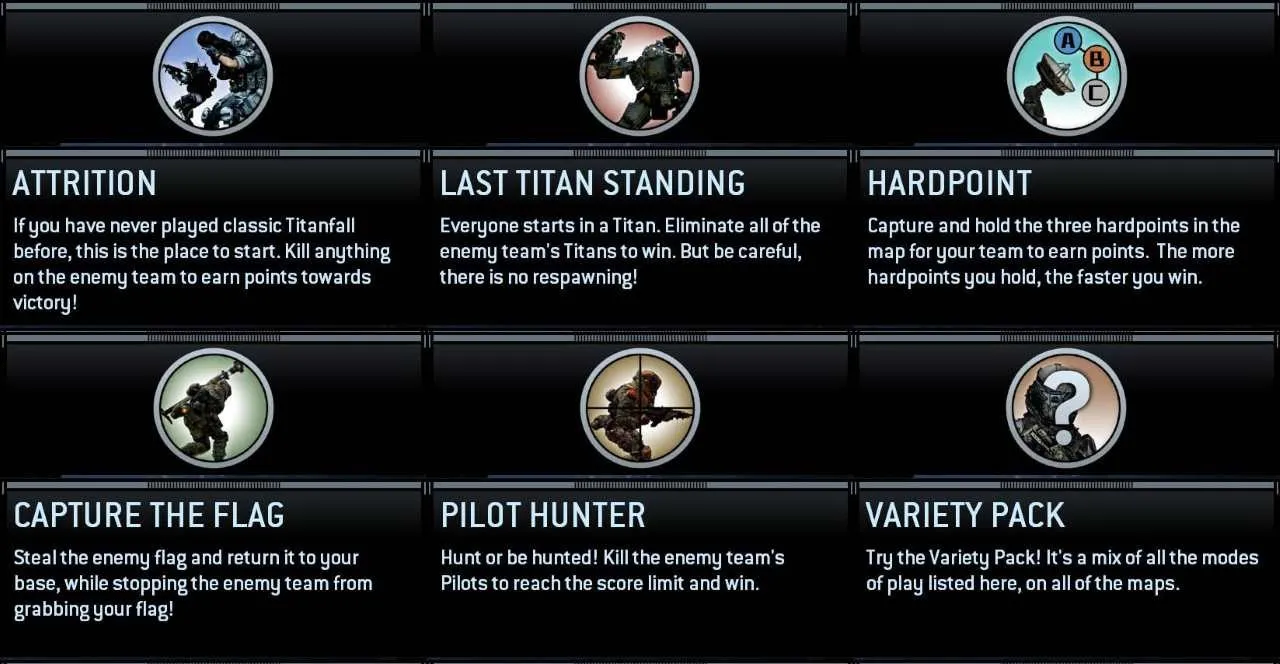
Titanfall: A Fast-Paced FPS Experience
Contents
Titanfall burst onto the gaming scene with the same innovative energy as Apple’s iPhone. While not boasting groundbreaking graphics or technology, it masterfully blends the best elements of first-person shooters (FPS).
The game’s defining feature is its towering robots, known as Titans. Their presence dramatically alters the typical FPS battlefield. Large, agile, heavily armed, and capable of being deployed at strategic points, Titans add a new dimension to combat. But does the addition of Titans alone make Titanfall a savior of the FPS genre? Let’s dissect the various aspects of this fast-paced shooter.
 Titans battling in a futuristic city
Titans battling in a futuristic city
Gameplay Mechanics
Retaining classic FPS game modes like attrition, hardpoint domination, and capture the flag, Titanfall also introduces two new modes: Last Titan Standing and Pilot Hunter. Each mode has its own strategic focus, but all seamlessly integrate the interplay between Pilots and Titans. The transition between controlling a Titan and maneuvering as a Pilot, including wall-running and parkour, feels fluid and natural.
The rhythm of a Titanfall match revolves around the following:
- Players begin as Pilots for either the IMC or Militia factions.
- Each Pilot has a timer counting down to Titan deployment. Eliminating enemies, capturing objectives, assisting teammates, and interacting with the environment shortens this timer.
- Earned points contribute to the team’s overall score, determining victory or defeat.
- The Epilogue mode activates at the match’s conclusion. The losing team attempts to evacuate via dropship, while the winning team tries to prevent their escape.
The surprisingly small player count of 12 per match, despite the capabilities of PCs and Xbox One, emphasizes another key gameplay element: AI-controlled characters. These Grunts and Spectres populate the battlefield, creating a dynamic and engaging environment that feels much larger than 12 players. They run, jump, take cover, communicate, announce targets, and engage in combat.
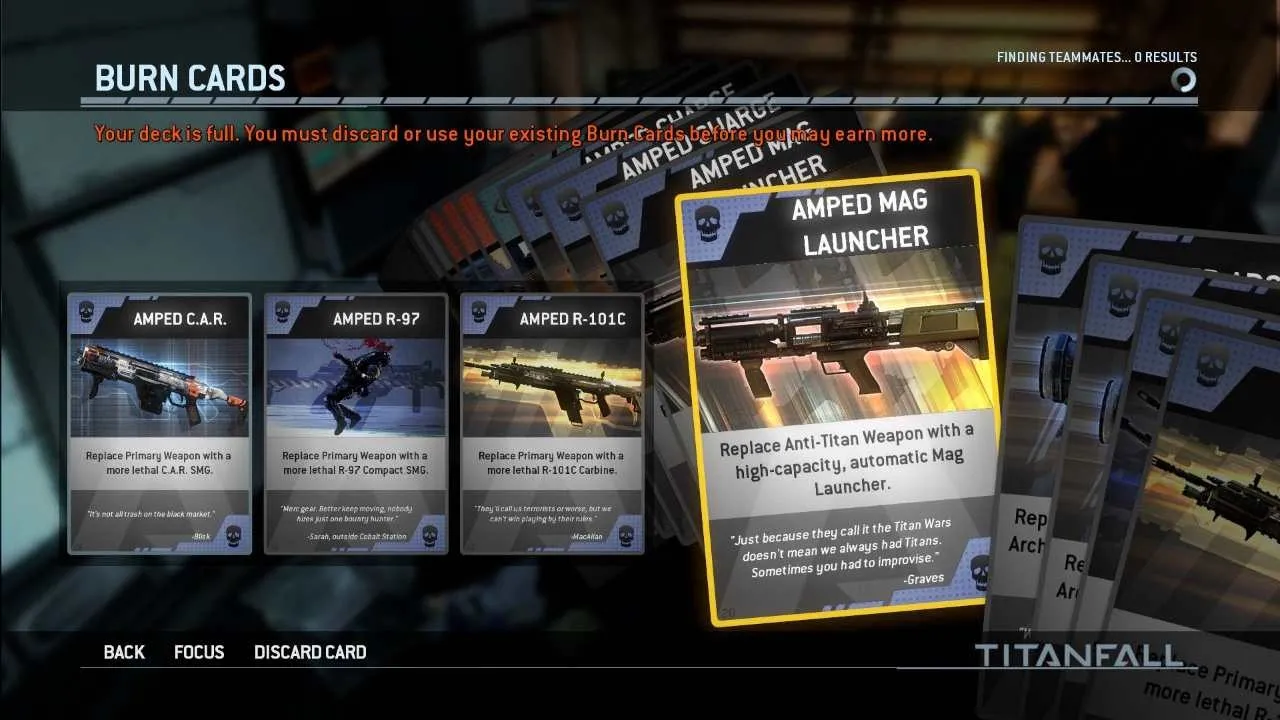 Pilots engaging in combat
Pilots engaging in combat
This makes a seemingly small player count feel like a chaotic 64-player match. Beyond adding to the atmosphere, these AI characters play a significant role in gameplay. They act as distractions, provide cover, offer target practice for accumulating points, and assist in overcoming enemy defenses. They also communicate enemy positions and alert players to incoming attacks. Utilizing the environment and anticipating AI behavior becomes a crucial aspect of Titanfall’s engaging and dynamic gameplay.
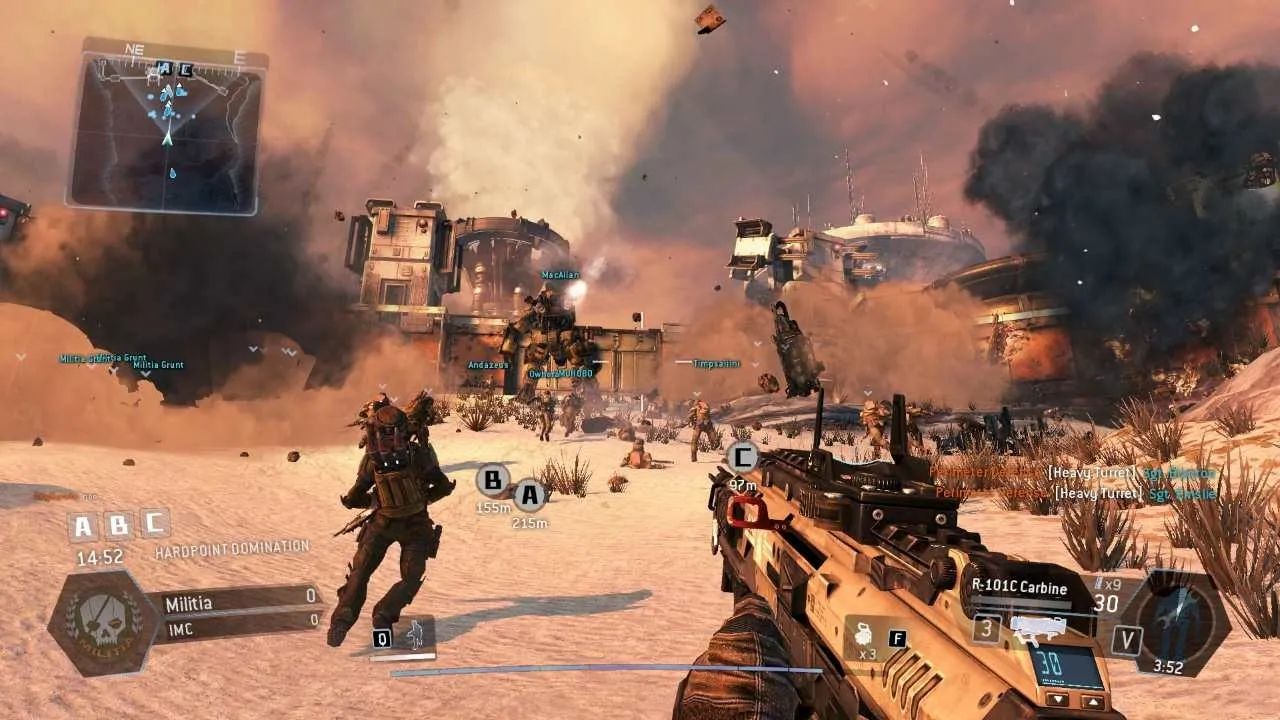 A Pilot wall-running for tactical advantage
A Pilot wall-running for tactical advantage
One drawback is the limited variety of game modes, which can become repetitive. The relatively small selection of weapons and maps also contributes to this issue, potentially hindering long-term engagement compared to other major titles.
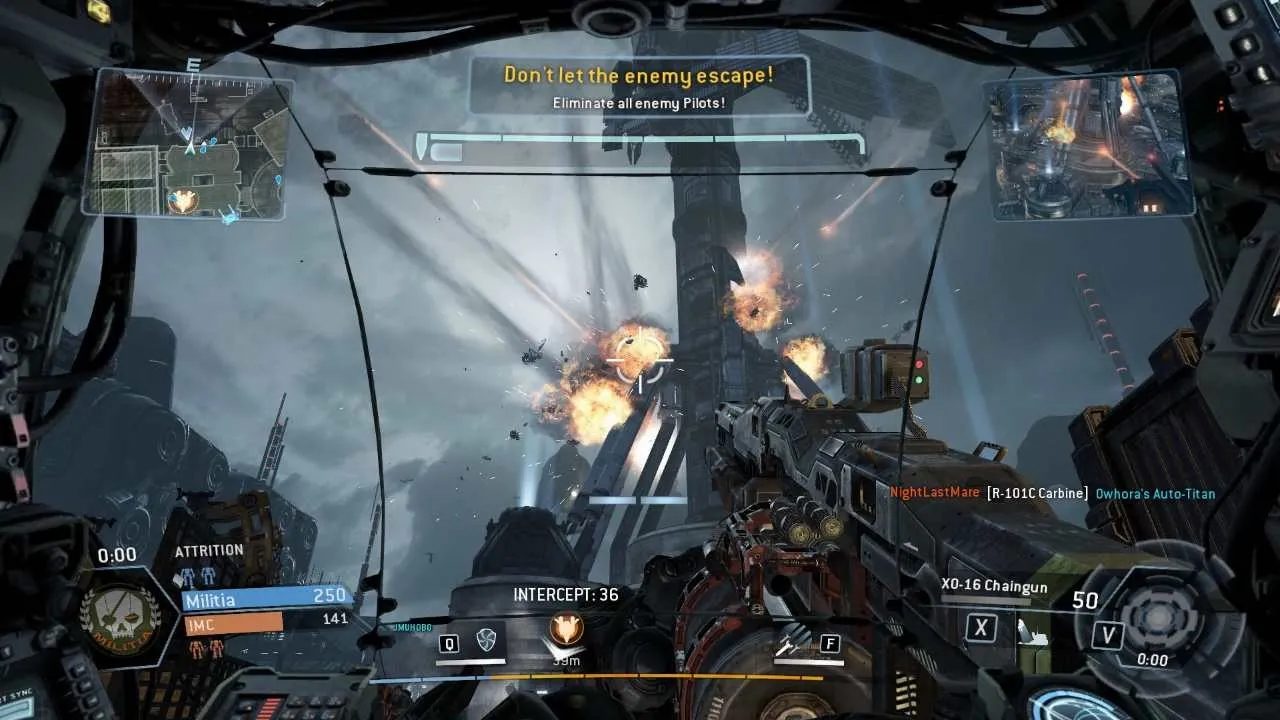 A Titan engaging AI-controlled enemies
A Titan engaging AI-controlled enemies
Server and Network Performance
True to EA’s reputation, Titanfall’s launch was plagued by server issues. The Asian servers experienced overload, preventing many players from connecting. Loading screen freezes were common and persisted for nearly a week. The game’s constant server connection requirement, even momentary drops resulting in disconnection, further frustrated players, particularly in regions like Vietnam.
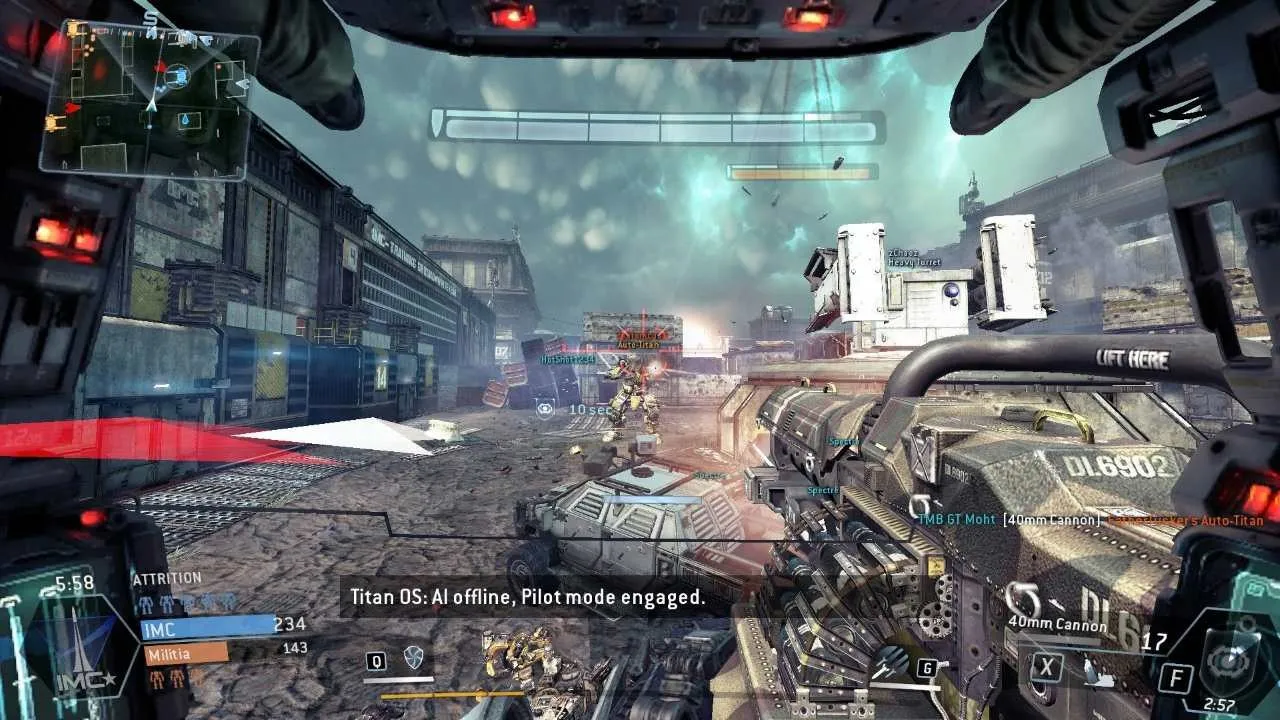 A Titan falling from the sky for deployment
A Titan falling from the sky for deployment
Despite the Singapore server location, many Asian players reported instability and high latency, with pings exceeding 150+ in Vietnam and Malaysia. Australian players faced even more severe issues, with one major internet provider blocking port 70, a crucial port for server communication. This prevented many from connecting, even with servers located in Sydney. While EA and Microsoft addressed the problem, it took over a week to resolve.
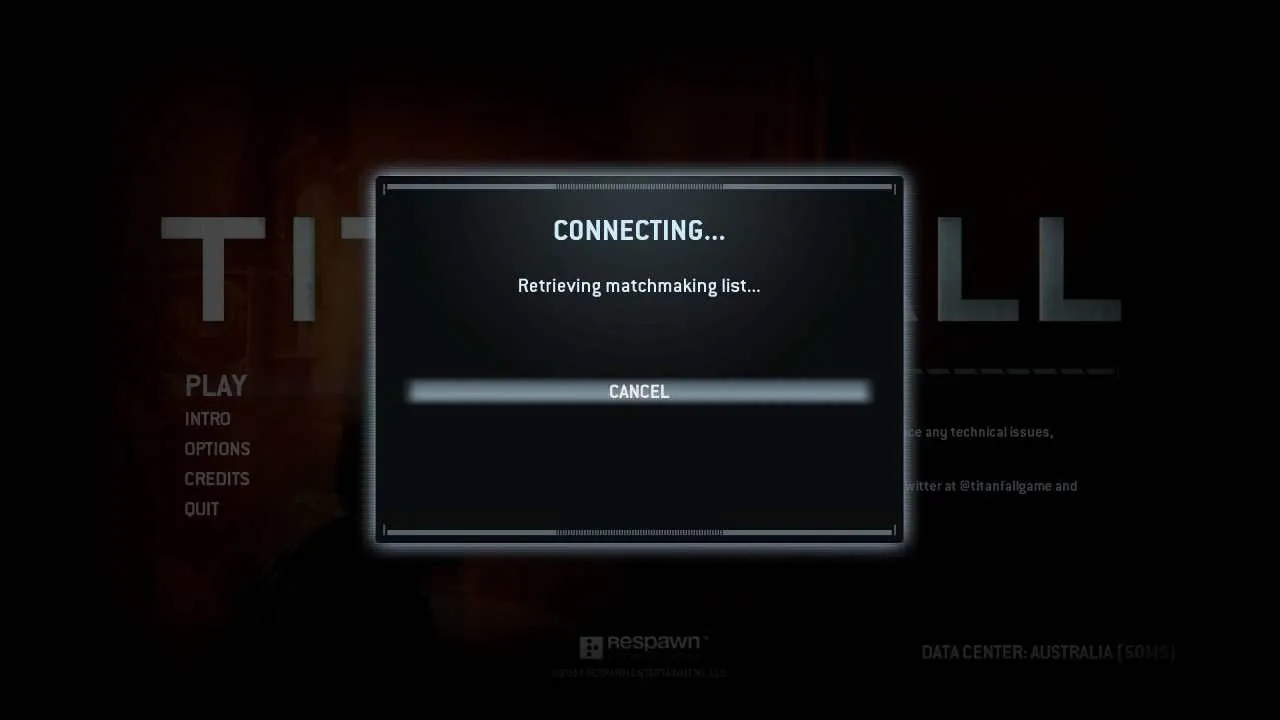 A Pilot rodeoing a Titan
A Pilot rodeoing a Titan
Despite these server woes, in-game network performance is surprisingly stable. The effective anti-lag compensation allows for smooth movement and combat even with higher pings.
Level Design and Controls
Titanfall’s level design significantly contributes to its success. Maps are neither too large for Pilots nor too small for Titans, catering to the core gameplay loop of wall-running, parkour, and Titan combat. Focusing on verticality, the maps offer numerous nooks and crannies for navigation and strategic positioning. However, camping is discouraged by multiple access points to these areas.
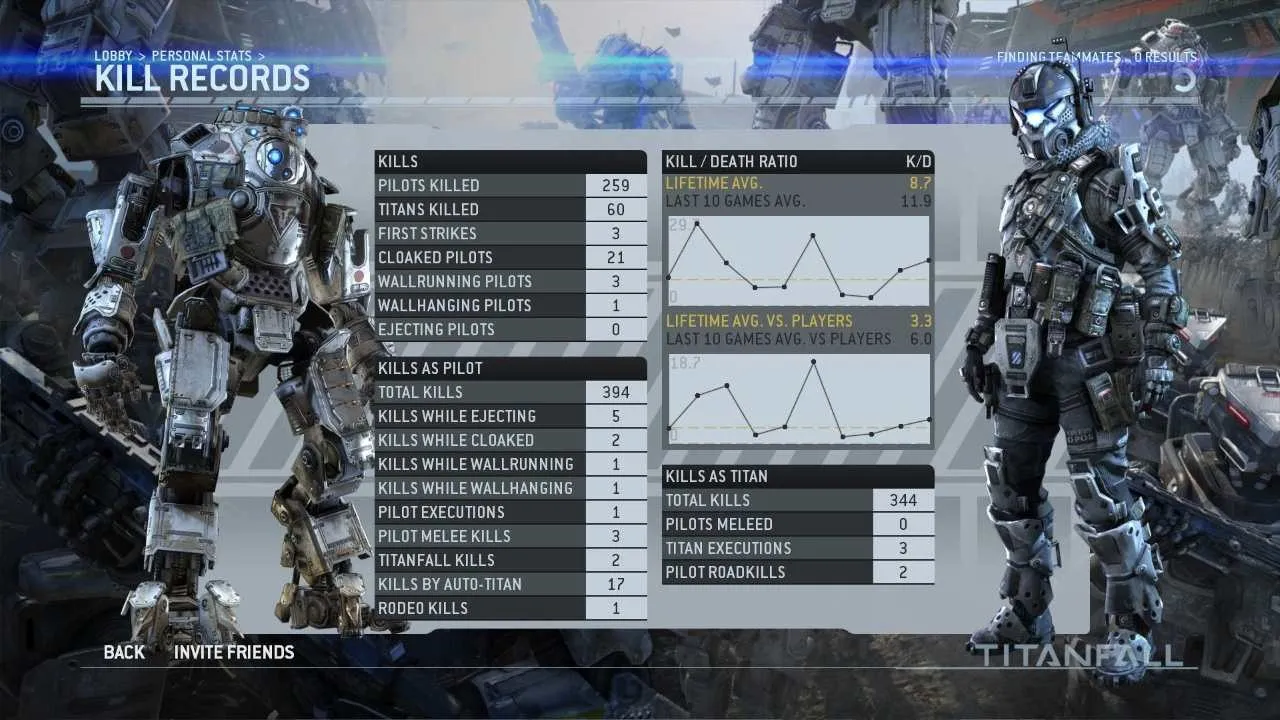 Customization options for Titans
Customization options for Titans
The game encourages constant movement, and the level design effectively facilitates this. The maps also showcase creative world-building and atmospheric details.
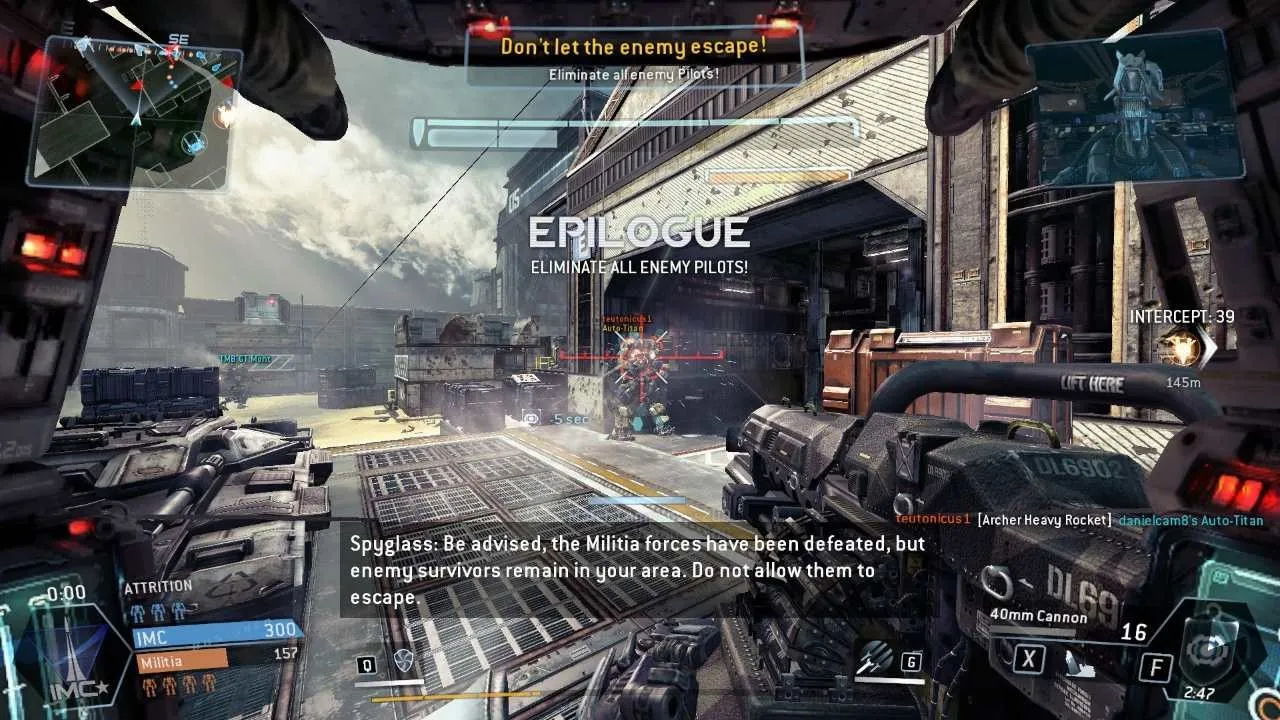 Various Titan loadouts
Various Titan loadouts
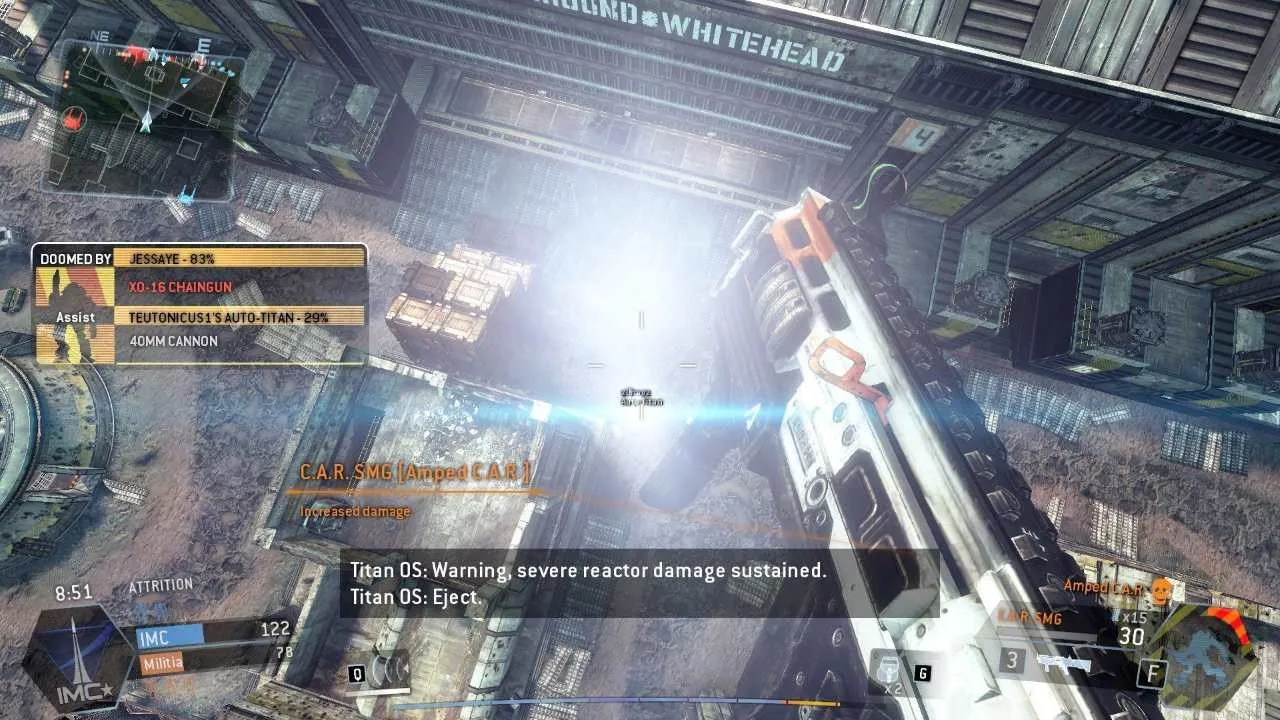 A Pilot using a grappling hook
A Pilot using a grappling hook
Personal Impressions
Titanfall initially makes a strong impression. The gunplay, movement, and overall feel of combat are excellent, borrowing inspiration from Mirror’s Edge, Call of Duty, and MechWarrior. However, beyond these core strengths, Titanfall lacks depth. The absence of a single-player campaign, underdeveloped characters, and limited unlockables hinder long-term engagement.
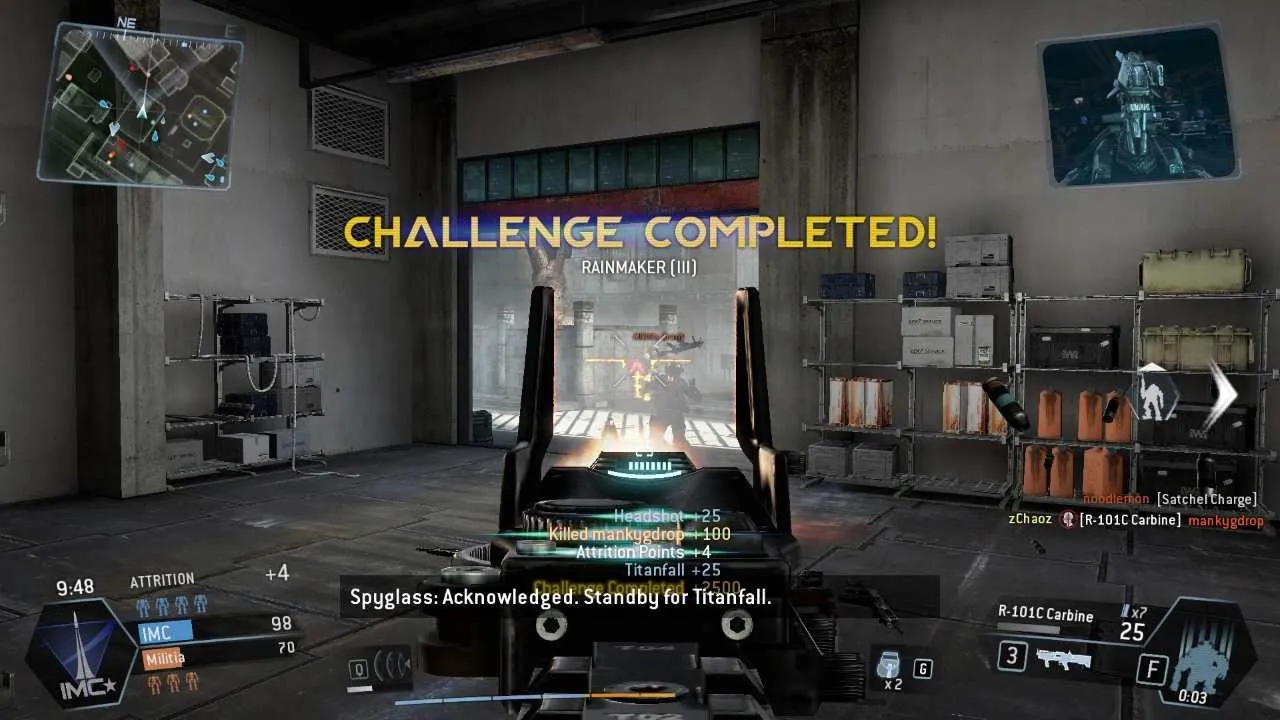 A Pilot ejecting from a Titan
A Pilot ejecting from a Titan
Titanfall ultimately prioritizes fun over lasting appeal. While enjoyable in short bursts, experienced players may find its repetitive nature and lack of progression unsatisfying.
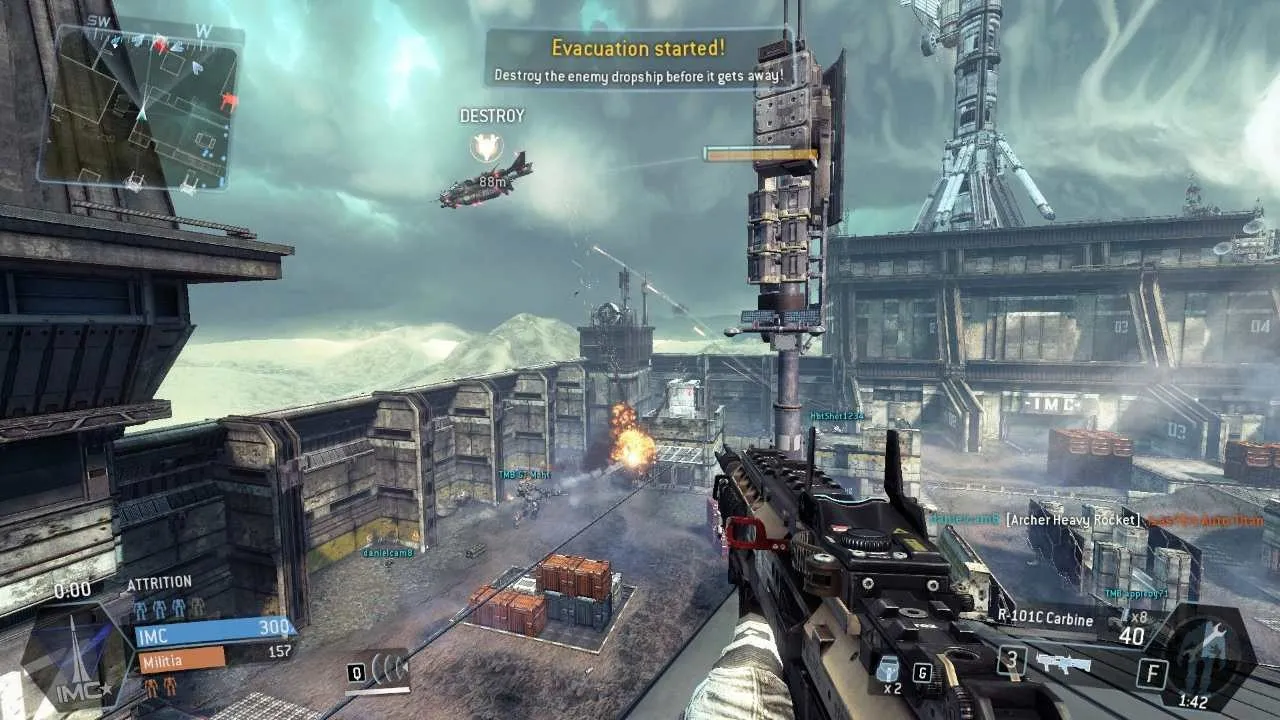 Titans clashing in close-quarters combat
Titans clashing in close-quarters combat
Conclusion
Titanfall delivers a thrilling and fast-paced FPS experience. The innovative Titan gameplay, fluid movement mechanics, and well-designed maps offer a refreshing take on the genre. However, server issues, limited content, and a lack of depth may hinder its long-term appeal.





Comments (0)